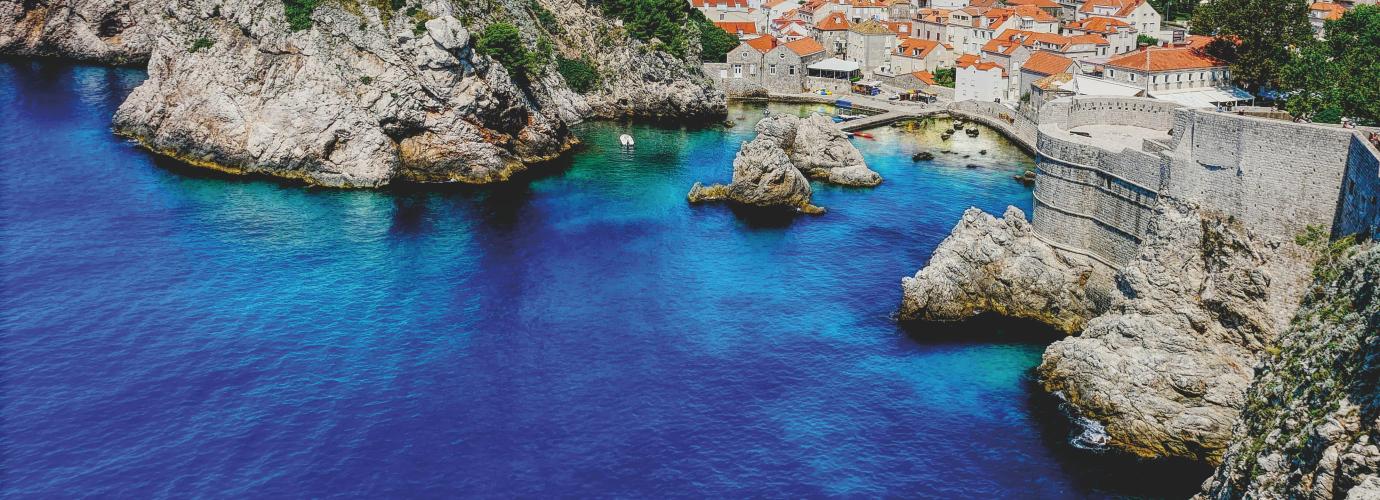Demographic situation
According to the 2011 Census by Croatian Bureau of Statistics (next population census will be in 2021), Croatia has population of 4.284.889 inhabitants out of which 48.2% are men and 51.8% are women, with population density of 75.7 inhabitants per square kilometre. Population by age and sex by settlements based on 2011 Census is available in absolute numbers on the official website of Croatian Bureau of Statistics. Average age of the population in 2011 was 41.7 (men – 39.9, women – 43.4) compared with 1991 when the average age was 37.1.
Population of the Republic of Croatia by age and sex (2011 Census)
[[{"fid":"1826","view_mode":"default","fields":{"format":"default","alignment":"","field_file_image_alt_text[en][0][value]":false,"field_file_image_title_text[en][0][value]":false,"field_caption[en][0][value]":""},"type":"media","field_deltas":{"1":{"format":"default","alignment":"","field_file_image_alt_text[en][0][value]":false,"field_file_image_title_text[en][0][value]":false,"field_caption[en][0][value]":""}},"link_text":null,"attributes":{"class":"media-element file-default","data-delta":"1"}}]]
Source: Croatian Bureau of Statistics
Since 1991 several negative demographic trends have been noted in Croatia which include population decrease, low birth rate, negative natural population growth, population ageing and increasing emigration of the working age population. Natural decrease in Croatia is a consequence of low birth rate and higher mortality rate. As a relatively new trend, it appeared during the war 1991-1995 but continued even after and is present for more than two decades. The age structure of the population is changing and with low birth rate, longer life expectancy and generally lower mortality, the demographic challenges which Croatia faces are similar to those of other European countries with higher share of older people.
According to the Labour Force Survey which provides data on the economic activity of the population in the Republic of Croatia in 2018, the working-age population (15+) was 3.531.000 with labour force of 1.807.000 out of which 152.000 were unemployed persons. Employment/population ratio was 46.9% and unemployment rate was 8.4% in 2018.
Emigration from Croatia is mostly motivated by lack of employment, entrepreneurial opportunities or perceived better opportunities in other countries. Emigrants are mostly people in their working age (20-50) who are looking for better living conditions in more developed countries. Emigration of young people and negative natural population growth have the effect of population decrease. According to the Croatian Bureau of Statistics in 2018 the number of people who emigrated from Croatia was 39.515 and in 2012, before joining European Union, the number was 12.877. The number of immigrants increased over the years as well. In 2012 the number of immigrants was 8.959 and in 2018 it was 26.029.
According to the medium variant of Croatian Bureau of Statistic's population projections for Croatia, by 2060 Croatian population will decline to 3.85 million inhabitants with the share of people aged 65+ reaching 29,4%.
Language
The official language in Croatia is Croatian. According to the 2011 Census, Croatia is inhabited mostly by Croats (90.42%). Among the ethnic minorities the largest is Serbian minority (4,36%), while other minorities each contribute to less than 1% of population (Albanians, Austrians, Bosnians, Bulgarians, Montenegrins, Czechs, Hungarians, Macedonians, Germans, Poles, Roma, Romanians, Russians, Ruthenians, Slovaks, Slovenians, Italians, Turks, Ukrainians, Vlachs, Jews). Members of national minorities are guaranteed the right to education in their language and script as defined by the Constitution of the Republic of Croatia, Constitutional Law on the Rights of National Minorities and the Law on Education in the Language and Script of National Minorities.
The official language in Croatia is Croatian (South Slavic language). Croatian is the native language of around 95% of Croatia's population. In counties and towns with significant percentage of other ethnic groups their languages have the status of official language in local administration. Minorities also have the right to education in their own languages from preschool to the high school level. Ethnic minorities in Croatia are also preserving their languages and identities through cultural institutions and minority media (newspapers, radio, TV program).
Students members of national minorities have constitutional right to education in three basic models and in other special forms of education in primary and upper secondary schools in Croatia. According to the model A the complete teaching process is organised in the language of the national minority (classes in the language and script of the national minority), but students have to learn Croatian language in the same number of hours in which the language of the minority is taught. Model B refers to bilingual teaching process and model C to nurturing language and culture of the national minority.
In the school year 2017/2018 following languages of national minorities were implemented in schools (listed by model):
- Model A: Czech (ISCED 1 and 2), Hungarian (ISCED 1-3), Serbian (ISCED 1-3), Italian (ISCED 1-3)
- Model B: Czech (ISCED 3), Hungarian (ISCED 1 and 2), Serbian (ISCED 1 and 2)
- Model C: Albanian (ISCED 1-3), German (ISCED 1 and 2), Czech (ISCED 1-3), Hungarian (ISCED 1-3), Macedonian (ISCED 1-3), Polish (ISCED 1 and 2), Rusyn (ISCED 1 and 2), Russian (ISCED 1-3), Slovak (ISCED 1-3), Slovenian (ISCED 1-3), Serbian (1-3), Italian (ISCED 3), Ukrainian (ISCED 1 and 2), Hebrew (ISCED 1 and 2)
Religion
According to 2011 Census, population of Croatia is predominantly Roman-Catholic (86.28%). Second largest religious group are Orthodox Christians (4.44%), mostly members of Serbian Orthodox Church. Other significant religious groups are also Muslims (1.47%) and Protestants (0.34%). Around 4.5% are atheists or agnostics.
In public schools in Croatia Religion is an optional subject. In primary schools Religion is an optional subject with no alternative option such as Ethics (Ethics is taught only in secondary schools). In secondary schools students have the option to choose if they want to take Religion or Ethics. It is compulsory to choose one of the subjects.
References
Croatian Bureau of Statistics, 2011 Census
Croatian Bureau of Statistics, Migration of Population of Republic of Croatia, 2018
Croatian Bureau of Statistics, Migration of Population of Republic of Croatia, 2016
Croatian Bureau of Statistics, Labour Force in the Republic of Croatia, 2018 Annual Average

